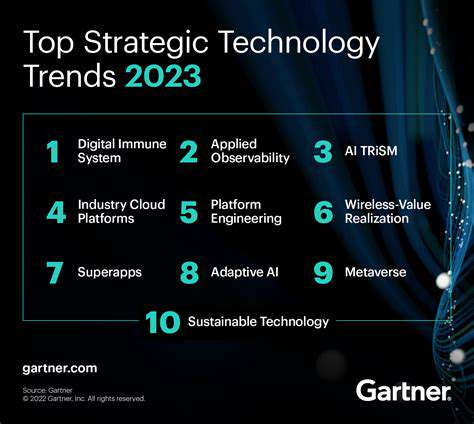The History of the Burger
Early Beginnings and Regional Variations
The American burger, as we know it today, wasn't born overnight. Its evolution stemmed from a confluence of factors, including the arrival of German immigrants bringing with them their love of seasoned ground meat, and the rising popularity of quick, affordable meals in the burgeoning American cities. Initially, these early burgers varied considerably across regions. Some utilized different types of ground meats, others employed unique breading techniques, and many included a wide array of toppings that reflected the local culinary traditions. This regional diversity laid the groundwork for the standardization that would later emerge.
Think of the countless iterations of the hot dog, evolving across different regions of the country. Similar stories could be told about burgers, showcasing the flexibility and adaptability of the concept in the early days. This early evolution, though lacking the uniformity of the modern burger, was crucial to shaping the eventual national standard.
The Rise of the Drive-In and the Fast-Food Revolution
The proliferation of the automobile in the mid-20th century dramatically impacted food service. The drive-in restaurant emerged as a pivotal player, offering quick, affordable meals accessible to a wider audience. The burger, with its simplicity and ease of preparation, quickly became a staple on drive-in menus. This accessibility, coupled with the desire for a fast and convenient meal, fostered the rapid growth of the fast-food industry.
Drive-ins weren't just about burgers; they were about the experience. The carhops, the neon signs, the overall atmosphere all contributed to the appeal. But the burger itself, because of its ease of preparation and versatility, became a key part of the drive-in's success story.
Standardization and Chain Restaurants
As the fast-food industry matured, the need for standardization became increasingly apparent. This was driven by the desire for consistency, efficiency, and cost-effectiveness in large-scale operations. This standardization meant that the burger's ingredients, preparation methods, and even presentation were meticulously defined, leading to a more uniform product across different locations of a particular chain. This approach helped to establish brand recognition and build customer loyalty.
The rise of iconic chains like McDonald's, Burger King, and others played a significant role in this process. Their focus on streamlined operations and consistent recipes played a huge part in the widespread acceptance of the standardized burger.
The Influence of Culinary Innovation
The evolution of the American burger wasn't solely about standardization. Culinary innovation also played a crucial role. New ingredients, cooking techniques, and flavor combinations were continuously introduced, leading to variations like gourmet burgers, artisan buns, and a wide array of specialty toppings. This constant evolution ensured that the burger remained a dynamic and exciting food option.
Beyond the basic beef patty, culinary experimentation led to creative options like veggie burgers, gourmet cheese blends, and innovative sauces. This constant push for improvement helped maintain the burger's appeal and relevance across generations.
The Modern Burger: A Global Phenomenon
The American burger has transcended its origins, evolving into a global phenomenon. Today, you can find burgers adapted to local tastes and preferences in countries worldwide. From gourmet burger joints to casual eateries, the burger continues to hold a special place in the hearts and stomachs of people around the globe. This adaptability, coupled with the ongoing innovation in ingredients and cooking techniques, ensures that the burger's legacy continues to thrive.
The modern burger is more than just a sandwich; it's a cultural icon. Its journey, from humble beginnings to global popularity, highlights the power of innovation, standardization, and adaptability in shaping a culinary tradition.
A well-structured website navigation system is crucial for improving accessibility. Clear and concise labeling of all links and sections is essential for users with disabilities who may rely on screen readers or other assistive technologies. Using descriptive text instead of generic labels like click here or more information greatly improves the user experience for everyone. This clear labeling also benefits users with cognitive impairments, making it easier for them to understand the website's structure and locate the information they need.
Beyond the Basics: Innovation and Modern Trends

Harnessing Innovation for Growth
Innovation is no longer a luxury; it's a necessity for businesses striving to thrive in today's dynamic marketplace. Companies that embrace innovative thinking and readily adapt to change often see significant improvements in efficiency and profitability. This requires a willingness to challenge the status quo, explore new possibilities, and develop creative solutions to existing problems. By fostering a culture of innovation, organizations can unlock untapped potential and gain a competitive edge.
A key aspect of this growth is the ability to identify and address emerging market trends. Understanding customer needs and anticipating future demands are crucial for developing products and services that resonate with consumers. Proactive innovation, therefore, involves staying ahead of the curve and anticipating the needs of the marketplace before competitors do. This forward-thinking approach allows businesses to capitalize on opportunities and maintain a leading position in their industry.
Driving Innovation Through Collaboration
Innovation isn't a solo act. Successful innovation often arises from collaborative efforts between different teams, departments, and even external partners. By fostering open communication and knowledge sharing, organizations can leverage the diverse perspectives and expertise of their employees to generate novel ideas and solutions. This collaborative spirit can lead to breakthroughs that wouldn't be possible through individual efforts alone.
Cross-functional teams, for example, can bring together individuals with varied skill sets and backgrounds. This diverse approach encourages the sharing of ideas and the development of innovative solutions that address complex challenges from multiple angles. Moreover, partnerships with external stakeholders, such as suppliers and academic institutions, can provide access to new technologies, perspectives, and resources, accelerating the innovation process.
Collaboration also fosters a culture of learning and experimentation. It encourages the free flow of ideas, enabling teams to explore new avenues and experiment with different approaches without fear of failure. This iterative process is critical for refining ideas and ultimately producing innovative solutions that meet the needs of customers effectively.
Measuring and Sustaining Innovation
Simply initiating innovative projects isn't enough; businesses must also measure the impact of their efforts and ensure that innovation becomes a sustainable practice. Establishing clear metrics for measuring the success of innovative initiatives is essential for demonstrating their return on investment and justifying future investments in innovation. This includes tracking key performance indicators (KPIs) such as sales growth, market share, and customer satisfaction.
Sustaining innovation requires a long-term commitment from leadership and a supportive organizational culture. Creating a system that rewards innovative thinking and recognizes the contributions of individuals and teams is crucial for encouraging continued innovation. This involves establishing clear processes for idea generation, implementation, and evaluation to ensure that innovation becomes an integral part of the company's DNA.
Regularly reviewing and refining innovation strategies is also essential. This includes adapting to changing market conditions, identifying new opportunities, and learning from both successes and failures. By making continuous improvements to the innovation process, organizations can ensure that they are always at the forefront of their industry, providing customers with the best possible products and services.
The Global Reach of the Burger: A Culinary Crossover

The Ubiquitous Burger: A Culinary Phenomenon
The humble burger, a seemingly simple patty sandwiched between buns, has transcended its humble origins to become a global culinary phenomenon. Its adaptability and accessibility have allowed it to flourish in diverse cultures and gastronomic landscapes, becoming a staple food for millions worldwide. The burger's enduring appeal speaks volumes about its ability to satisfy a fundamental human craving for flavorful and satisfying food.
From bustling street vendors in Southeast Asia to high-end restaurants in Europe, the burger's presence is undeniable. Its versatility allows for endless customizations, catering to a wide range of tastes and dietary preferences, making it a truly universal dish.
Global Variations on a Classic
While the basic burger remains recognizable, variations on the theme are abundant. Different cultures have infused their own unique flavors and ingredients, resulting in a diverse array of burger experiences. The addition of kimchi in Korean bulgogi burgers, the use of exotic spices in Indian tandoori burgers, or the inclusion of fresh herbs in Mediterranean-style burgers showcases the adaptability of this beloved dish.
These regional variations often highlight local ingredients and culinary traditions, creating a truly global tapestry of burger experiences.
The Economic Impact of the Burger Industry
The burger industry is a significant player in the global economy, employing millions of people in restaurants, farms, and related businesses. The demand for beef, buns, and other ingredients fuels a global supply chain that reaches into every corner of the world. The economic impact is far-reaching, influencing everything from agriculture to tourism.
From small family-run burger joints to massive fast-food chains, the burger industry has a profound effect on local economies, fostering job creation and supporting countless livelihoods.
The Burger and Cultural Exchange
The burger's journey across borders is a fascinating example of cultural exchange. As it spreads, it inevitably blends with local cuisines and traditions, creating unique and delicious hybrids. This cultural exchange enriches the culinary landscape, offering a platform for innovation and experimentation.
The burger's ability to adapt and evolve reflects the interconnectedness of our globalized world, allowing us to experience different cultures through a shared culinary experience.
The Burger's Influence on Food Trends
The burger has influenced many food trends, from the rise of gourmet burger joints to the increasing popularity of plant-based alternatives. The focus on quality ingredients and innovative preparation methods has driven the evolution of burger culture, showcasing its resilience and adaptability.
The Role of Technology in Burger Preparation
Advances in food technology have transformed the way burgers are prepared, from precise meat-grinding techniques to automated cooking processes. These advancements have contributed to the efficiency and speed of burger production, making it easier to serve the ever-growing demand for this dish worldwide.
From industrial-scale production to home-based culinary experimentation, technology plays a crucial role in the burger's continued evolution as a global food staple.
Sustainability and the Burger Industry
Increasing awareness of environmental issues has led to a growing emphasis on sustainability within the burger industry. This includes sourcing ingredients responsibly, reducing food waste, and exploring alternative proteins to reduce the environmental footprint of burger production. Sustainable practices are becoming increasingly important in the fast-food industry as consumers demand more environmentally friendly options.
The burger industry is facing the challenge of balancing its economic success with its environmental impact, and innovative solutions are emerging to ensure long-term viability.
Read more about The History of the Burger
Hot Recommendations
- Traditional Foods for Day of the Dead
- Food Etiquette in Italy: Pasta Rules!
- Best Family Friendly Restaurants with Play Areas in [City]
- Review: The Best [Specific Dessert] Place in [City]
- Top Ice Cream Parlors in [City]
- Traditional Foods for Halloween
- The History of the Potato in Ireland
- Best Vegan Pizza Joints in [City] [2025]
- Best Bakeries for Sourdough Bread in [City]
- Food Culture in Argentina: Asado and Wine





![[Brand A] Air Fryer vs [Brand B] Air Fryer: Which is Better?](/static/images/28/2025-07/ValueforMoneyandWarranty.jpg)


![Review: The Most Unique Dining Experience in [City]](/static/images/28/2025-07/BeyondthePlate3AAMulti-SensoryExperience.jpg)
![Best Bakeries for Sourdough Bread in [City]](/static/images/28/2025-07/LocalFavoritesandCommunityHubs.jpg)
![Top Restaurants in [Specific Neighborhood of City]](/static/images/28/2025-07/BeyondthePlate3AUniqueExperiencesandLocalFlavors.jpg)
![Review: A [Specific Cuisine] Food Truck Experience](/static/images/28/2025-07/WorththeHype3AARecommendedExperience.jpg)